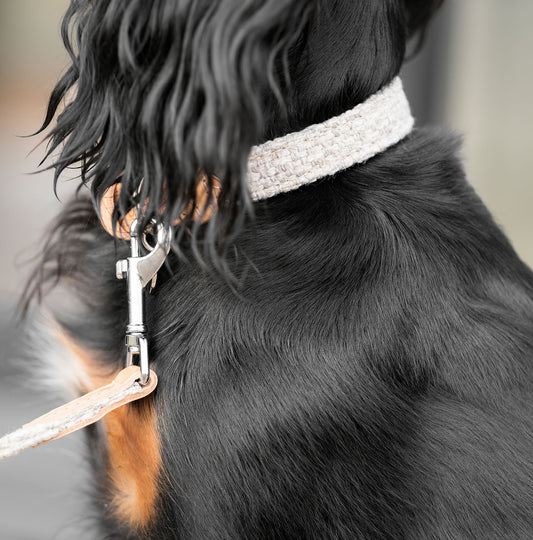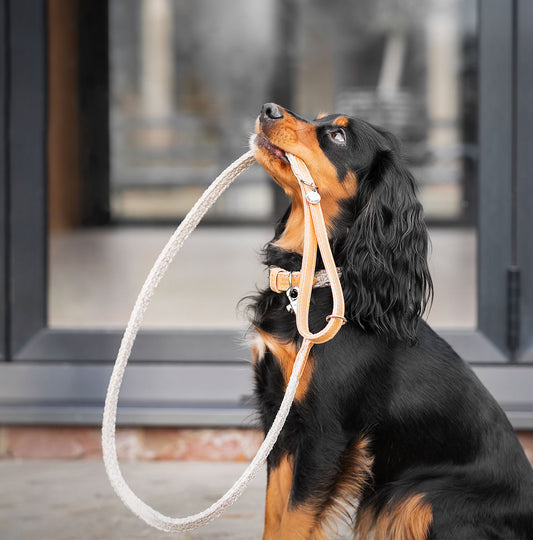Daily walks are a natural and important part of a dog’s life, and by taking your furry friend for a trip around your local area, you can exercise them while providing mental stimulation - helping to prevent them from becoming restless and upset. It’s also only likely to benefit the relationship between you and your dog, as walking is commonly associated with bonding, training and building closer ties with your canine pal.
Most dogs will quite literally leap at the chance to go for a walk with their owner, but it’s also possible for them to be apprehensive when it comes to getting out on the lead. You may have found your pup pulling backwards, hiding when it's time to put their harness on, or simply refusing to let you clip their lead on. In this guide, we take a closer look at why your dog might be refusing to walk and offer tips to help your address the problem.
Why Doesn’t My Dog Want To Walk?
More often than not, dogs love going out with their human companions. As long as they’ve got the energy, they should be jumping at the chance to go exploring with you as soon as you bring out the lead or harness and begin to prepare for your trip out together. With this in mind, if your pooch doesn’t seem excited at the prospect or doesn’t appear to enjoy the dog walk itself, it could be worth questioning why.
Reasons why your dog may not want to walk include:
- laziness
- unpleasant weather
- a short attention span
- inexperience
- a lack of routine
- fear
- an uncomfortable harness, collar or lead
- tiredness
- a lack of trust
- illness
- an undiagnosed injury
What To Do When Your Dog Refuses To Walk
When trying to find out why your pet is reluctant to walk, start by checking if they are injured or unwell. If you think they may be, you should seek advice from a professional - call your veterinarian with your concerns and they may want to check them over to make sure there is nothing to worry about. If you don’t check that your dog is okay prior to your walk, you could be forcing them to exercise when they’re in pain, not only hurting your dog but also potentially worsening their condition.
For mental or emotional issues, for example if your dog is frightened, untrusting, out of routine or simply not used to going on walks, you should steadily introduce them to the concept by walking them around your garden connected to their lead or harness. Once they seem happy, you can consider taking them out for a walk near where you live for a short period of time and gradually extending the duration of the walk, before taking them for walks elsewhere.
Why Is Walking Dogs Important?
By walking your dog regularly, you’re providing them with the mental and physical stimulation they need. Dogs want to explore the world and it’s many sights, sounds and smells, and if you prevent them from doing this, you’re likely to leave them bored, irritable and depressed. And not only is it bad for your dog’s mental and physical health, but it could also lead to destructive behaviour.
Dog walking has many benefits to your pet’s long-term development. If you start to take your furry friend for walks from a young age, you’ll get them used to the concept of going for walks consistently, and they’ll hopefully grow to enjoy these trips out.
Another bonus to taking your dog for a walk is that it improves their training. It also helps with their socialising - both with humans and other animals - and it tires them out to encourage a healthy sleep when you return home.
What Happens If You Don’t Walk Your Dog?
Missing the occasional walk is something that may happen naturally as a side effect of bad weather, not having the time or simply forgetting to do so. However, if it becomes a regular occurrence, it could have a negative impact on your dog.
Failing to walk your dog will mean that they’re not getting enough exercise, possibly leading to serious health problems, and they also won’t be given the opportunity to socialise and learn about their environment. Without this experience, they’re likely to react in an unpredictable manner when it finally comes to interacting with other dogs, people and the outside world.
What Dogs Don’t Need Walking?
While all dogs need some level of exercise each day, there are breeds that need distinctly less activity than others. For example, larger, more athletic dogs could need several walks each day, where as smaller pooches or lazier dogs are more likely to be suitably happy after a run around the back garden.
Dog breeds that typically require less exercise include:
- Pugs
- English Bulldogs
- French Bulldogs
- Bull Mastiffs
- Chihuahuas
- Shih Tzus
- Chow Chows
- Miniature Pinschers
- Basset Hounds
- Pekingese
- Boston Terriers
- Tibetan Spaniels
- Cavalier King Charles Spaniels
- Greyhounds
If your dog belongs to one of these breeds or has any of them in their family tree, it could be the reason for their apprehension when it comes to walks. If they don’t, you should or consider taking them to the vet for a health check to ensure that the problem isn’t something serious.




































































































